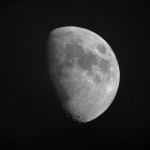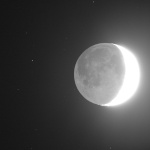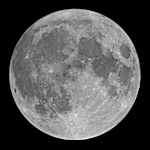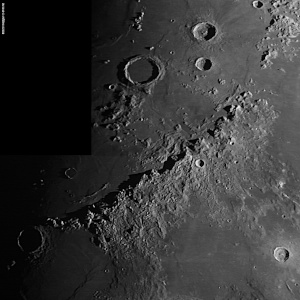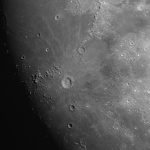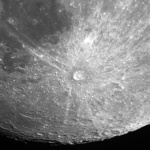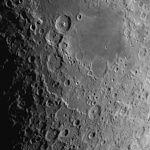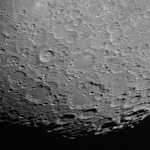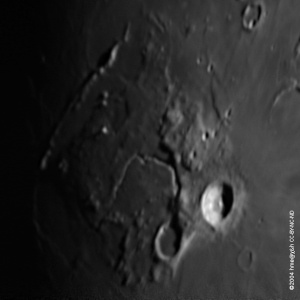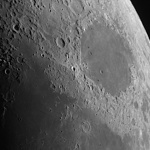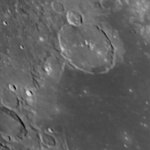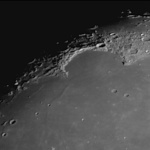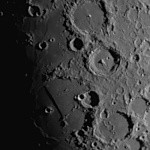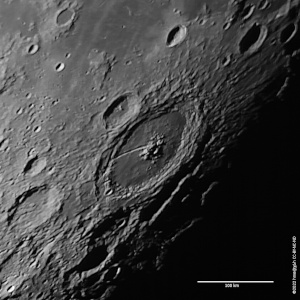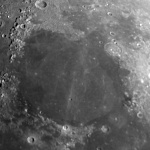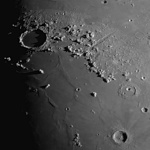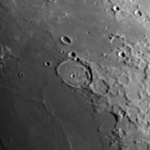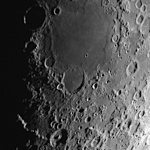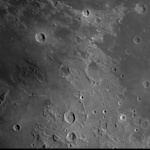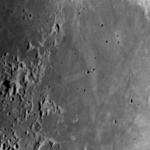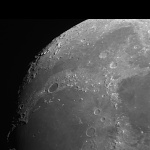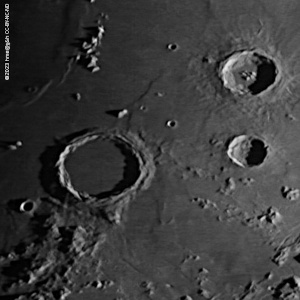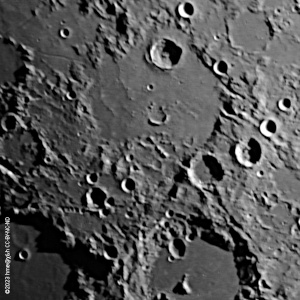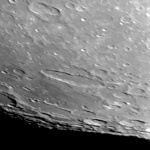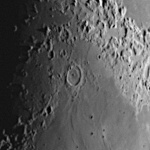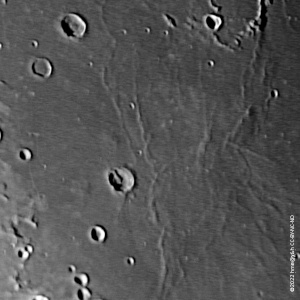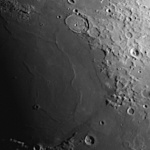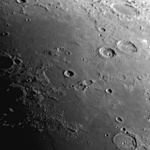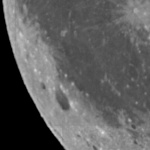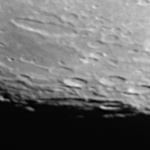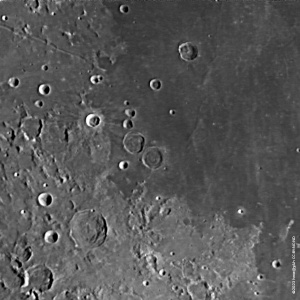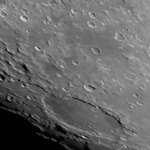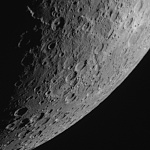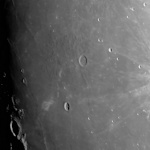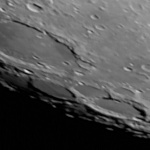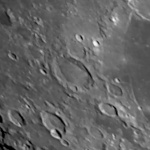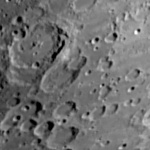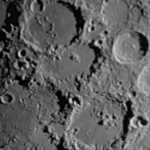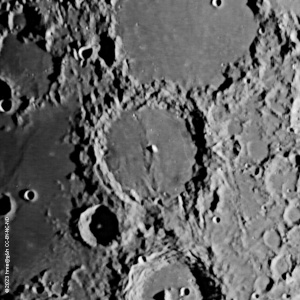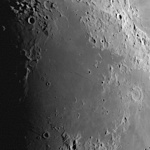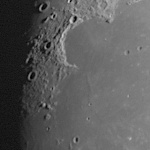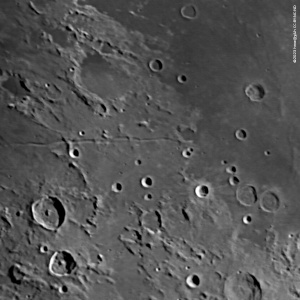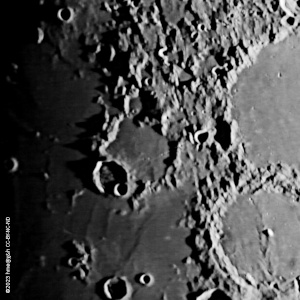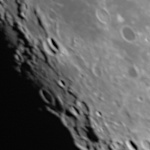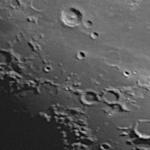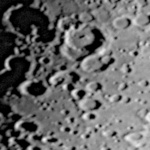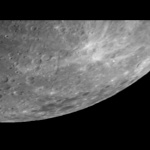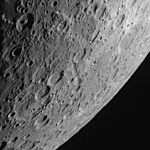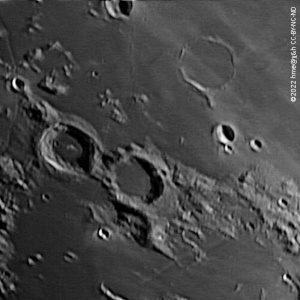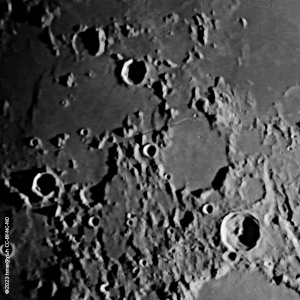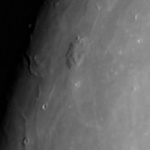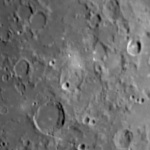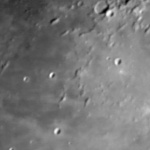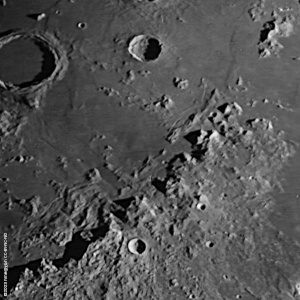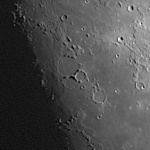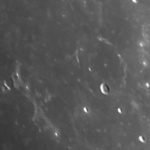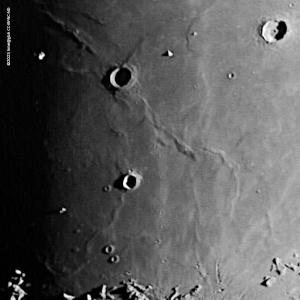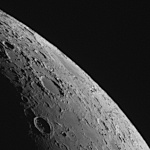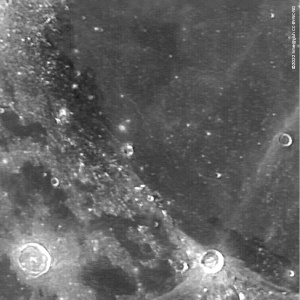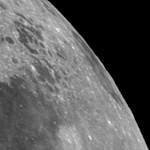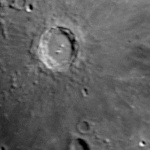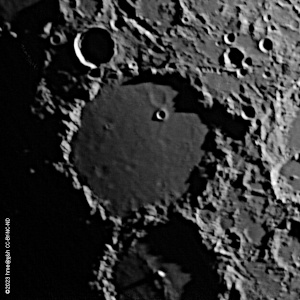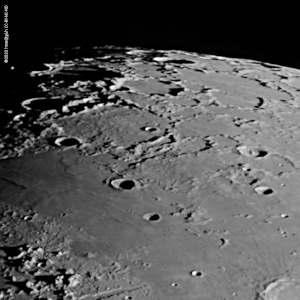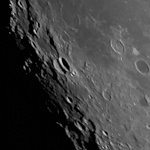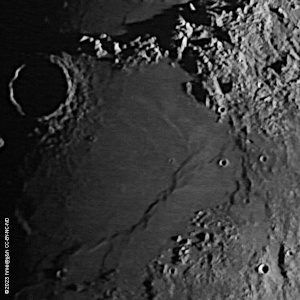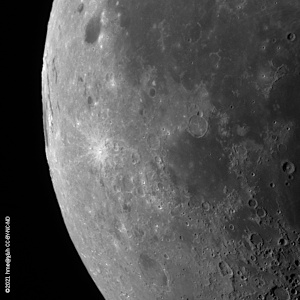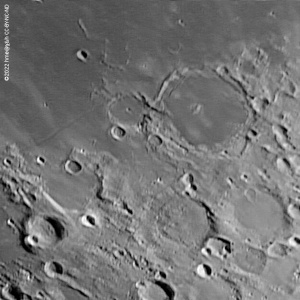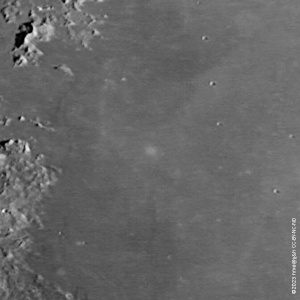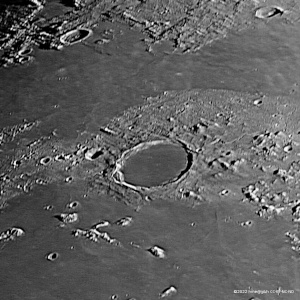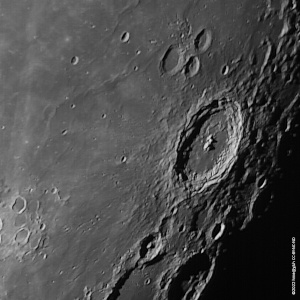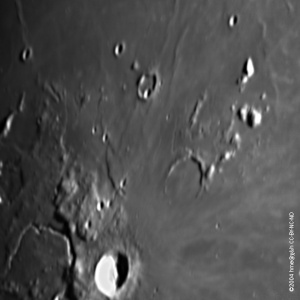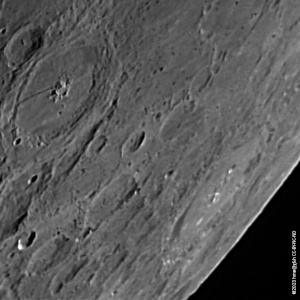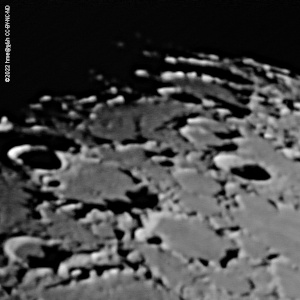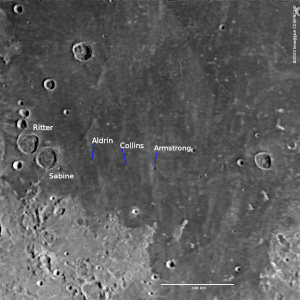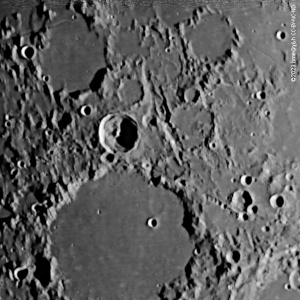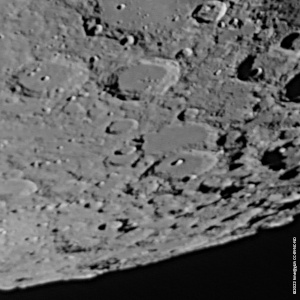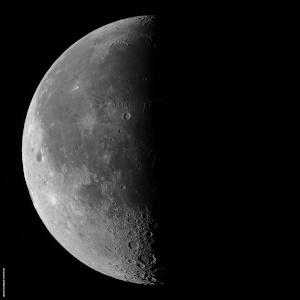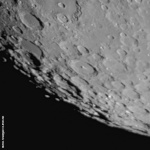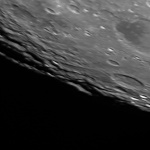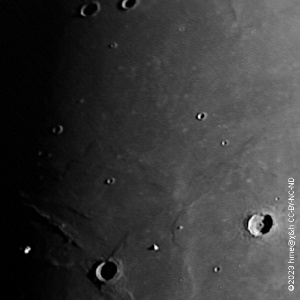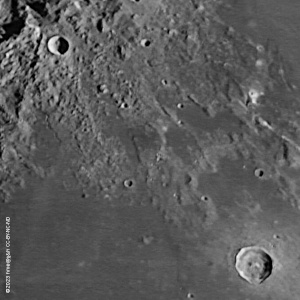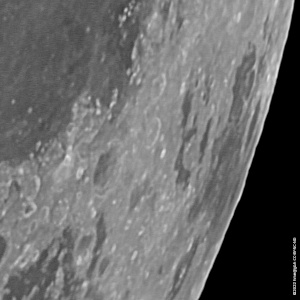
{
Practical astronomy
|
Astronomy
|
The Moon
|
The physical Moon
|
The Lunar 100
}
The Lunar 100
The Moon is extremely rich and varied in surface detail. However, when Charles A. Wood introduced amateur astronomers to his list of 100 objects or features on the Moon, he wrote (Wood 2004a, 2012a):
... many backyard astronomers never go beyond the astro-tourist stage to acquire the knowledge and understanding necessary to really appreciate what they're looking at, and how magnificent and amazing it truly is. Perhaps this is because after they identify a few of the Moon's most conspicuous features, many amateurs don't know where to look next.
His list of 100 features on or of the Moon intends to offer a good cross section, similar to the Messier catalogue for deep-sky objects. The list begins with easy targets and has some extremely difficult ones toward the end. The list itself can be found online in the 2012 article. The Wikipedia page "Lunar 100" (Wikipedia 2021a) is slightly better. Wood also made much more detailed notes available to the Stargazers' Lounge (Hardwick 2013a). The notes betray a bias toward visual observing with a large telescope, but this need not stop imagers to capture virtually all 100 entries. There is also a bias toward observing during the first half of the lunation, between New and Full Moon. This will suit most observers, who prefer the first half of the night to the second.
The placeholder image is taken from van Gogh (1889a). To do the objects justice, consult Wood's notes (Hardwick 2013a) and also use the Atlas virtuel de la Lune (Chevalley and Legrand 2012a). Without these, it can be unclear which is the Lunar 100 object.
Lunar 1 to 20
The first three entries are unconventional. They are named "Moon", "Earthshine" and "mare/highland dichotomy"; and Wood's notes provide no information. Objects within the first dozen include a few very prominent craters, a mountain range (montes), a smallish mare, and a scarp or dorsa.
The maria originated in very large impacts that smashed through the lunar crust so that lava from the interior flooded the crater. The result is a darker and much more even surface. These large impacts must have been relatively recent, because the plethora of craters of the highland regions have by and large not destroyed the mare floors. The opposite is true, the maria impacts destroyed large regions of crater-strewn highlands.
Lunar craters are very varied. They are not volcanoes, but result from the impact of meteorites. The largest are 250 km in diameter. Old craters have newer craters within them or superimposed on their wall, large craters have central mountains and terraced rims; some of them have bright "rays" of ejecta.
The rims of maria create mountain ranges (montes). There are steps of perhaps 100 m height in maria. These are called dorsa or rupes and can be seen when close to the terminator (the boundary between light and shadow). In fact, all features are better observed not far from the terminator, as it is mostly the play of light and shadow that allows us to see these features.
Rupes Altai is a little different. It is a scarp in a highland region and rather higher than your average dorsa. It is concentric to Mare Nectaris, so will be related to that major impact.
Further objects include a large bay (sinus), a remarkably straight dorsa, two quite different valleys (valles), a colour/brightness contrast within a mare floor.
Lunar 21 to 40
New types of features here are an isolated mountain (mons) within a mare, our first rille (rima), the peculiar rays of Messier and Messier A, the oddly shaped Mare Frigoris, some more rilles, domes near the crater Arago, a lake (lacus), and an archetypical dorsa.
